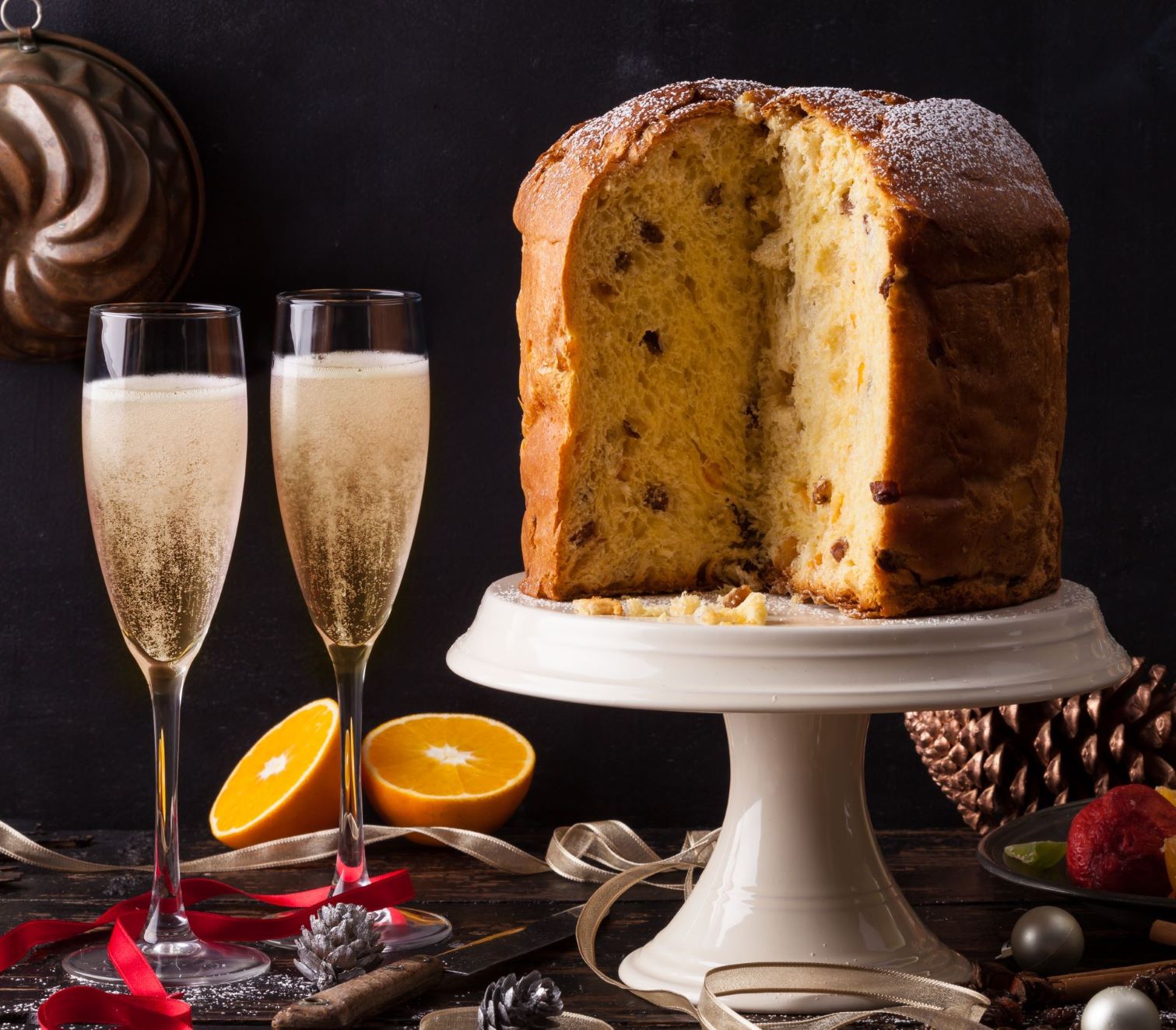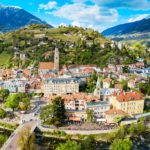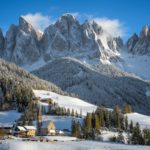The best Italian Christmas sweets
The most popular Italian Christmas sweets
December is one of the best months of the year, the month of holidays but also a month of Christmas sweets and good food based on traditions. In this article, we will guide you through Italian regions by traditions of Christmas sweets.
Christmas and Christmas cakes are sweet and so aromatic in Italy. The typical regional Christmas sweets are so tasty that they make you immediately think of the family reunited, the fireplace, the Christmas tree, the snow, the tables and some homemade sweets, which in Italy changes from region to region.
It will be fun to discover the flavors and aromas of our regional traditions, so follow me and let me tell you some of the typical regional Christmas sweets.
The tradition of the dolci di Natale is long and varied: hundreds of types of cakes, cookies and sweets are prepared from North to South, each region has its own diversity and local Christmas recipes derived from a centuries-old tradition. Let’s begin from the North of Italy discovering the most representatives 20 Italian Christmas sweets.
Valle d’Aosta
Valle d’Aosta have the ancient and authentic flavor of Micooula, a delicious rye and chestnut-based bread typical of the Camporcher Valley where it still cheers Christmas with its medieval recipe. The Micooula is delicious at any time of the day, from breakfast when it can be consumed together with a cappuccino or latte, through to a snack or at the end of meals, when it gives the best of itself in combination with delicious local honeys or cheeses.
Piedmont
Piedmont has the “Tronchetto di Natale”. This Christmas cake looks like a soft roll made with a mixture of eggs, flour, starch, yeast, butter and sugar and stuffed and covered with a thick cream made of marroni, mascarpone, cocoa, brandy and whipped cream, and it looks and tastes delicious. It seems to be inspired by the trunk that warmed the Christmas of Piedmontese families in past centuries. If you want know more about Piedmont, click here.
Liguria
Our third region is Liguria. Liguria owns the great pandolce. A bread stuffed with sultanas, pine nuts, pistachios and candied pumpkin, rich in color and very tasty. The Genoese pandolce was born between an official competition and a myth. According to an ancient legend, Andrea Doria challenged the pastry chefs of Genoa to invent a sweet symbol of the city’s wealth. This cake had to meet precise requirements: it had to be nutritious and long-lasting to be able to carry it on long journeys by sea. If you’d like to know more about this region, here is the link for the full article about the Italian Riviera.
Trentino Alto Adige
Trentino Alto Adige eats Zelten for Christmas, a typical South Tyrolean specialty. Zelten is a traditional Italian Christmas cake. It is a rich, tasty cake made with a dough that is stuffed with lots of marinated fruits and nuts, and decorated with walnuts and almonds on top. The recipe varies from one family to another, but the basic ingredients are flour, butter, eggs, sugar, and baking powder for the dough, and candied fruits and nuts for the filling.
This sweet fruitcake pairs well with a cup of tea or a glass of dessert wine like Moscato or Vin Santo. Its name is believed to have been derived from the German word Selten, which means “sometimes”, which highlights the cadence of the preparation of the dessert, limited to the Christmas period.
Lombardia
Lombardy is the home of Panettone, also called Pan di Toni. Il Panettone is world-famous Christmas cake and the legend tells that the panettone was born at the court of Ludovico il Moro, lord of Milan in the far 15th century. It was Christmas Eve when the official cook of the Sforza family inadvertently burned a cake. To recover the situation Toni, the kitchen boy who worked in the kitchen, decided to use a dough that he had kept aside for Christmas. He worked it adding flour, eggs, raisins, candied fruit and sugar, obtaining a particularly leavened and soft dough. The dessert was appreciated so much that the Sforza family decided to call it “pan di Toni”, from which the term “panettone” would come in the centuries to come. Panettone is not the only famous Italian Christmas cake in the world; with him comes his brother Pandoro.
Veneto
Pandoro or pan d’oro means ‘golden bread.’ It is a traditional Christmas bread from Verona that gets its name due to its pleasing yellow color. The yellow or golden color comes from the large amount of egg yolks that are in the bread. Pandoro is baked in a special star-shaped mold. Unlike panettone, pandoro does not contain any dried fruits or nuts. When sprinkled with confectioners’ sugar, it has the appearance of fallen snow on a mountain. Pandoro may be served with many types of creams or sauces, such as mascarpone topping or melted chocolate. The Pandoro began as a dessert for all holidays and Sundays. At the beginning of the century, the Medici even advised physicians to give it to patients, since it was light and nutritious food! It is only later that it became a cake for Christmas. Today, it is one of the most typical Christmas desserts. If the story of pandoro inspired you, here is the link for Veneto region.
Friuli Venezia Giulia
In Friuli Venezia Giulia it is traditional to eat “gubana”. A pastry roll filled with dried fruit, raisins, honey and soaked in grappa. This Christmas Cake comes from Slovenia, where “guba” means “fold”, given the shape of the sweet folded in on itself. Friulans like to enjoy it with grappa or good local wine. If you’d like to know more about its capital city of Trieste, here is the link for you.
Emilia Romagna
Emilia Romagna enjoy Christmas with Panone. This Emilian Christmas cake that comes from the Bologna countryside has a recipe that changes from home to home. Ingredients similar to Pan Speziale but, if possible, even more nutritious: hazelnuts, peanuts, almonds, candied cherries, chocolate and honey. It has been prepared since ancient times with common ingredients which are easy to find even for humble families. Emilia Romagna is rich in food and tradition. Here is the link to get inspired and visit this beautiful region.
Tuscany
Tuscany is the home of Panforte. As you probably noticed, most Christmas cakes begin with name “pan” which translates to bread, the base of cake recipes. The original recipe dates back to the year 1000, when it was prepared by the ‘speziali’ for the noble class, the wealthy and the clergy, because it contained ingredients that were expensive at the time, such as orange, cedar, melon, almonds and spices. Panforte is thin, soft cake filled with candied fruit, almonds and spices.
Lazio
In Lazio we have Pangiallo. From Imperial Rome to today, this dessert was prepared on the day of the winter peak as a good omen for the return of long, mild, sunny days. It includes dried and candied fruits and raisins. The yellow color (giallo) is given by the mixture of flour, oil and saffron with which the loaf is brushed before baking it.
Umbria
Umbria region has something similar to gingerbread, called Panpepato. It is a unique and very Italian Christmas cake. The pride of the Umbrian gastronomy is bread stuffed with dried fruit, chocolate and ground black pepper, sweet and sour at the same time, and is almost spicy. Panpepato is bread stuffed with almonds, hazelnuts, pine nuts, pepper, cinnamon, nutmeg, orange, cedar, raisins, cocoa, coffee, liqueur, grape must, the most eccentric for its complexity of aromas.
Abruzzo
Abruzzo has his Christmas cake named Parrozzo, The ‘pane rozzo’ (rough bread) was prepared for the first time in 1920 by pastry chef Luigi D’Amico from Pescara, inspired by the corn loaves of the peasant tradition; the chef added eggs, almond flour and chocolate. The first person to taste it was apparently poet Gabriele d’Annunzio, who even wrote a poem about it, ‘La canzone del Parrozzo’ (The Parrozzo Song).
Marche
Bostrengo is the name of Christmas cake in Marche. Born as a poor dish of the Christmas period, it combines walnuts, almonds, dried figs, stale bread and candied fruit. Similar to Tuscan panforte, it contains dried and candied fruit, and cereals like farro, barley and rice. In Marche it is traditional to bake Christmas pizza, a sweet bread with figs, dried fruit, grated lemon and orange and chocolate.
Molise
In Molise there is the tradition of eating Caragnoli. Caragnoli are helix-shaped pancakes prepared with eggs, flour and oil and then dipped in honey; they originated in the 1500s.
Puglia (Apulia)
The dessert that at Christmas perfumes the Apulian houses is Cartellate, rose-shaped fritters garnished with honey. Tradition has it that the very thin dough takes the form of the bands of the infant Jesus, becoming a very sweet representation of the overwhelming local gastronomy.
Campania
In Campania Christmas sweets are called: Neapolitan struffoli. These Christmnas bites are small dough balls made with flour, sugar, eggs and lard, baked or fried, served with pieces of candied fruit, honey and pieces of sugar. Its origins go back to Magna Grecia, when there was a similar version called loukumades.
Calabria
Calabresi celebrate Christmas with Nepitelle. Typical of the provinces of Catanzaro and Crotone, these half-moon shaped sweets are filled with walnuts, dried figs, almonds, Strefa liqueur, cocoa and dark chocolate, or honey, depending on the area where they’re made. The name comes from the Latin nepitedum, which indicates eyelids because nepitelle resemble a closed eye.
Basilicata
In Basilicata, they enjoy Calzoncelli. Fried ravioli filled with chickpea cream, chocolate or boiled chestnuts, usually covered with homemade red wine or Aglianico wine. They originated around Potenza and spread throughout the region in the 16th century.
Sicily
The sweet you will find in Sicilian homes is Buccellato. Originating in Palermo, buccellati are stuffed with dried figs, raisins, almonds, orange peel, pistachios, vanilla, and other ingredients that vary depending on the areas where they’re prepared. Also called cucciddati, they’re considered the evolution of the panificatus, a typical dessert prepared by the Romans.
Donuts in the official version of them. Apart from the aromas: lemon, orange, cinnamon and vanilla, there are dried figs, almonds, walnuts, hazelnuts and pistachios.
If you are interested on Sicilian Food & Culture, join our special tour entirely dedicated to the Sicilian Culture, Food & Wine. Click here to read the itinerary.
Sardinia
Finally, in Sardinia the typical dessert is seadas or sebadas (fried cheese cakes). While they can be found year-round, these fried sweets filled with the local pecorino and covered with the exquisite corbezzolo honey, are typical of Christmas for Sardinians island. They originated in the 16th century. Another Sardinian way to end the Christmas lunch is to serve fresh ricotta with honey on the table. To know more about Sardinia, click here.
Curiosity
Pandoro, Christmas cake from Verona, can be customized into a Christmas Cake tree!
Pandoro can be served as Christmas tree by slicing vertical wedges into star-shaped slices, topping with chocolate or berries and arranged into a beautiful Christmas-tree shaped presentation.
Buon Appetito and Buon Natale!
I hope that you enjoyed this insight into the magic atmosphere of the Italian Christmas sweets and that you get inspired to learn more or see for yourself! If you enjoyed this blog post, share it with a friend and if you are interested in learning more about traveling to this area or any other region in Italy, please contact us for more information.





